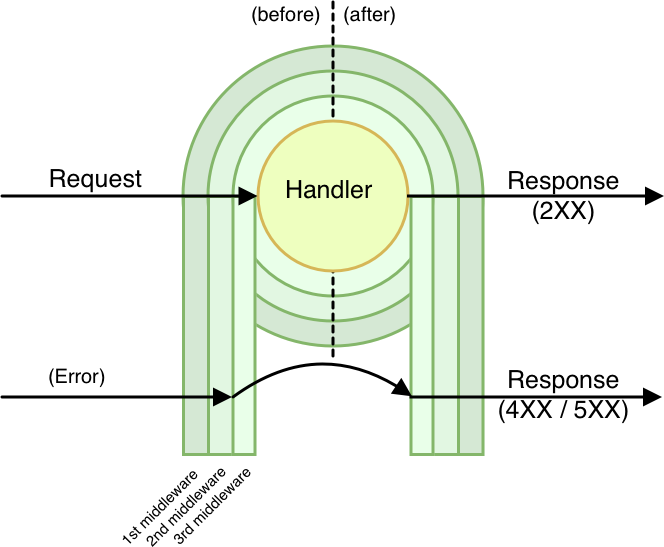How it works
Middy implements the classic onion-like middleware pattern, with some peculiar details.

When you attach a new middleware this will wrap the business logic contained in the handler in two separate steps.
When another middleware is attached this will wrap the handler again and it will be wrapped by all the previously added middlewares in order, creating multiple layers for interacting with the request (event) and the response.
This way the request-response cycle flows through all the middlewares, the handler and all the middlewares again, giving the opportunity within every step to modify or enrich the current request, context, or the response.
Execution order
Middlewares have two phases: before and after.
The before phase, happens before the handler is executed. In this code the
response is not created yet, so you will have access only to the request.
The after phase, happens after the handler is executed. In this code you will
have access to both the request and the response.
If you have three middlewares attached (as in the image above), this is the expected order of execution:
middleware1(before)middleware2(before)middleware3(before)handlermiddleware3(after)middleware2(after)middleware1(after)
Notice that in the after phase, middlewares are executed in inverted order,
this way the first handler attached is the one with the highest priority as it will
be the first able to change the request and last able to modify the response before
it gets sent to the user.